Men's magazines IV: the weeklies
This is the fourth page of an article on the history of men's magazines:Men's magazines I:
- Early evolution
- The accepted wisdom
- Exploring the gap
Men's magazines II:
- Loaded defines the lads' mag
- The rise of FHM
- Table: Men's magazines by mid-1996
Men's magazines III:
- The advent of women
- A maturing men's market
- Taking over the world
- Into the digital world
Men's magazines IV – advent of the weeklies:
- IPC and Emap gear up
- Nuts- 'the world's first men's weekly'
- Emap follows with Zoo Weekly
- Building a new market -Cut and KO!
- Decline sets in
- A free way forward
- Table: Men's monthlies – details and sales

Woman's Mirror: an IPC weekly from the 1960s with Michael Caine on the cover
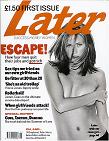 Later: a failure for IPC but its editor returned with Nuts |
IPC and Emap gear upFor 30 years from the mid-1960s, IPC was the UK's top magazine publisher and, by the mid 1980s, Emap was the number two. IPC has a history in women's weeklies back to the 1930s. By 1980, it published 69 weekly and monthly titles, 22 of them for women. These included the top four for women, selling in total 5 million copies a week. IPC was nicknamed 'Ministry of Magazines' because of its size. In 1987, it was given a kick up its rather sleepy backside by two German publishers, Gruner & Jahr and Bauer, with Best and Bella, respectively. It responded with Chat and Now. In May 97, G&J sold Here! to IPC, and it was merged with Now. In 2000, G&J withdrew from the UK, selling its titles to (US Hearst-owned) National Magazines. However, Bauer's Take a Break became the biggest-selling women's weekly at 1.2 million copies, eclipsing Woman and Woman's Own, which had led the field for half a century. IPC similarly lost pole position in the men's monthly market, after Loaded was overhauled by Emap's FHM.In 1969, IPC had become part of by Reed Group Ltd, a newsprint, paints and wallpaper combine. However, Reed's corporate strategy led it to evolve into today's Reed-Elsevier, a global online group focused on business information and academic journals. As part of this strategy, Reed sold IPC to a group of venture capitalists in 1998, which in turn sold the company on to US group Time Warner in 2001. This three-year period was one of consolidation, with a focus on profits in the run-up to the sale. Nuts was IPC's first big launch since the takeover by Time Warner. Emap started out as a local newspaper publisher (East Midlands Allied Press). It built up a consumer specialist and business magazine portfolio and gradually shifted the emphasis to consumer magazines and radio from the 1980s. As the publisher of FHM, it was top dog in the men's monthly sector. Furthermore, it built up expertise in the women's weekly sector with Heat and Closer (2002). The former struggled until it was repositioned as a women’s celebrity weekly. Circulation rocketed and it won a string of awards. Emap described Closer as its most successful launch. Given the success of the men's monthlies and the experience of IPC and Emap in women's weeklies, ears pricked up when rumours of development projects for a men's weekly emerged in 2003. Emap's "Project Tyson" seemed to be first off the block, but IPC said the concept for Nuts had been under development as Project Tribal since autumn 2002. Editor Phil Hilton, who had run IPC's Later, had rejoined IPC from Emap in March 2003. Later, IPC’s attempt to graduate lads from Loaded to a more mature read, had failed to catch on. Launched in 1999, it closed in June 2001 when sales were reported at below 50,000. The closure occurred during a month of carnage for new titles as Mondo and Nova also bit the dust. Hilton was up against another former IPC editor, Paul Merrill, who was lured from the women's weekly Chat in December to launch Zoo Weekly. In an article in Press Gazette, IPC editorial director Mike Soutar said the men's monthlies were too laddish, putting off some potential buyers (this had been the reasoning behind launches such as Word, from start-up companies). Furthermore, the daily tabloids had lost male readers because 'newspaper strategies over the past 10 years have been to aggressively recruit female readers'. At stake for the two companies was the possibility of a new market in men's weeklies. In the same way that Loaded and FHM built a market for men's monthlies with copy sales to rival – and even beat – those of women's monthlies, such as Cosmopolitan, could IPC and Emap create titles for men in the mould of Woman, Now and Take a Break? The top women's weeklies had combined copy sales of almost five million; six of them each sold 500,000 a week, with H Bauer's Take a Break having the magic formula to sel1 1.2m copies – double its nearest rival. The top women's weeklies (December 2003 ABC figures) were:
|
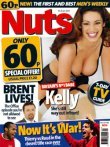 Nuts: Half-price
first issue with Kelly Brook as the cover girl |
Nuts – 'first men's weekly'In mid-January 2004, a million free copies of Nuts were given away at large branches of WH Smith and sent out with copies of media trade magazines. This was a risky strategy, given Emap's success in having taken the concept of the lads' magazine from IPC's Loaded and gone one better with FHM. Launch costs were estimated at £8m.The next week's issue (23 January) was sold for 60p, half the aimed-for regular price. Breakdown of Nuts first issue |
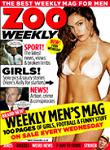
Zoo: bigger on women |
Emap's Zoo WeeklyEmap followed a similar strategy to IPC, but a week later. Its first issue (dated 24 January) was free. Zoo did not reveal a cover price, but had 50p-off vouchers for the next four issues. The second issue cost £1, with a settle-down price of £1.20. |
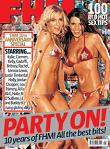 FHM: a decade
old, but losing sales
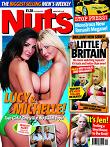 Raunchier Nuts: October 2004 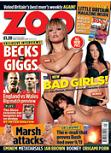 Louder Zoo: Oct 2004  Jack: lost out in the men's market |
Building a new marketIn an article in Press Gazette, IPC editor Paul Merrill said Zoo aimed at blokes 'enjoy a laugh'. He said research sshowed men wanted girls, football, conspiracy theories, jokes and reviews. He added: 'It's a massive advantage to us that we can get really topical stuff on the cover, which Nuts can't do... Their covers go early but we hold ours back.'Merrill brought his sense of the bizarre with him from Chat, given the photograph of a woman's enormous tumour and a condom in the soup stories. The use of far more model shots – many topless – was a clear differentiator, which Nuts editor Phil Hilton had avoided, wanting to produce a magazine that could be read openly on a train and left lying around at home. By March, IPC was claiming the biggest-selling crown. Both titles continued to juggle with all aspects of the titles, including regular half-price offers and Zoo switched publication date to Tuesday (from Wenesday). As the year progressed, word crept out of 'Project Sue' and 'Project Squint', both names for a men's weekly at H. Bauer. Also, the trade news on the new weeklies' sales was good. Zoo and Nuts registered official ABC circulation figures of 200,125 and 290,337 respectively. Unofficial figures showed Nuts was selling about 500,000 at its launch, though this dropped when the price rose. By October 2004, Nuts was charging £6,250 for the back cover advertising page.Circulation news for the monthlies was not so good. Emap's FHM sold 573,000 a month, down 4.6% on the previous six months, while IPC's Loaded tumbled 10% to 235,000. Dennis closed Jack, which was originally launched by Loaded's founder editor James Brown. On 12 August, H Bauer, the German publisher behind Take a Break and Bella released Cut. It took a different approach from IPC and Emap on the day that official circulation figures showed the existing titles averaged half-a-million sales a week in their first six months. The new title took 'the best' from newspapers and magazines (including Emap's Zoo). This strategy had been used by Dennis with The Week and the Guardian for several years with its Editor supplement. The first issue culled from 54 papers and 185 mags for a mix of news, humour, gadgets, quizzes, sport, cars and, of course, women, although the flesh count was refreshingly low. Emap's Zoo responded with a 'new look', 108 pages and a price cut to 50p. Sports coverage was increased with two sections dedicated to football. IPC stuck to the high ground with a 16-page 'Babe vault' section (total pagination 92 + 16). However, the low-key launch of Cut did not go well with a Guardian report suggesting that fewer than 70,000 copies of the 700,000 distributed were sold. This was despite a launch price of just 50p. It closed after a handful of issues. Another publisher hoped to emulate the success of Zoo and Nuts. OK! and Daily Express owner Richard Desmond was planning his own weekly, KO! in 2004. However, this never came off. Back on the women's side of the fence, Emap was gearing up to launch glossy fashion weekly Grazia. It was on the women's weekly area that the big publishers were concentrating. Meanwhile, the men's monthlies lost sales and The Face closed in 2004. |
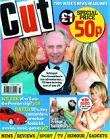 Cut:
Bauer's attempt at a men's weekly lasted less than six months |
Decline sets inThe turn of the new century marked the acme of the lads' titles. Since then, it has been a steady decline into the online arena and free distribution. As the table below shows, FHM's circulation fell two-thirds – and with sales not much above 120,000, Loaded's future looked uncertain in 2008. Bauer's Cut was an abysmal failure lasting just a handful of issues. Ice was sold on and later closed. Zoo and Nuts held on to their sales but also showed weakness.Emap completed its withdrawal from the US with the closure of the US edition of FHM and sold off its French arm (including the licence for FHM). However, its strategic problems were huge and the company cut its self up and sold the parts off at the end of 2007. It was a different story in the 'manity' sector, with GQ increasing sales along with NatMag Rodale's Men's Health and Men's Fitness at Dennis. Many men turned back to their hobby titles in motoring, computer games and cinema.However, Dennis Publishing and a couple of entrepreneurs had some ideas up their sleeve. |
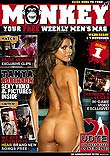 Monkey is a web-only digital magazine 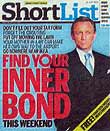 Shortlist: first issue of the free men's weekly in September 2007 had Casino Royale actor Daniel Craig on the cover |
A free way forwardOn 29 September 2006, Sport, a free weekly London sports magazine, put 300,000 copies on to the streets at rail and Tube stations. The concept came from France. Paris-based Sport Media & Strategy set up a UK office for the launch with Greg Miall, a former sales director for Metro, the free paper, as publishing director, and Simon Caney, who had edited Emap's Match, as editor-in-chief.Even in France, the idea was only two years old. Yet Francis Jaluzot, who had also launched Parisienne freesheet 20 Minutes, was already showing a profit. Sport saw a first ABC figure over 300,000 and pulled in advertising. The free model also inspired Dennis, which launched Monkey – a pure digital title – in November 2006. The digital edition for 16 to 30-year-olds sent by email each Wednesday. It released a first ABCe figure of 209,612 copies. And a year later, Mike Soutar (former editor of Smash Hits!, FHM and US Maxim) put two and two together to lead the launch of ShortList, a weekly that put Sport's distribution model together with flesh-light men's content under former Later and Nuts editor Phil Hilton.Some 500,000 copies were handed out in London, Manchester, Edinburgh and Glasgow. Open Goal followed the free distribution model in November, with the magazine handed out to football fans at their grounds. Publisher Rich Media focused on the game with a cheeky editorial style. Meanwhile, brand extension was the name of the game for both IPC and Emap with versions of their titles cropping up in online and mobile phone formats. IPC went furthest with NutsTV, a Freeview channel, in July 2007. This was a joint enterprise with Turner Broadcasting System (both companies being owned by Time Warner). |
|
Men's magazines: details and sales (2004 and 2007) |
||||
Title |
Publisher |
Launch date |
ABC sales Jan-Jun 2003* |
ABC sales Jan-Jun 2007* |
|
|
||||
Arena |
Emap London Lifestyle |
1986 (bi-monthly, Wagadon) |
32,683 |
30,886 |
Bizarre |
Dennis |
Mar/Apr 1996 (John Brown, IFG) |
101,209 |
54,571 |
Blender (CD-Rom) |
Dennis |
1995 |
closed |
closed |
Boys Toys |
Freestyle |
Mar/Apr 1999 |
50,000 uncertified |
50,000 uncertified |
Cut |
H. Bauer |
August 2004 |
n/a |
closed |
Ego |
Portfolio |
Mar/Apr 1999 |
closed |
closed |
Eat Soup |
IPC |
Oct/Nov 1996 |
closed |
closed |
Enter (CD-Rom) |
Pure Comms |
Mar 2000 |
closed |
closed |
Escape |
Dennis |
Nov/Dec 1996 |
closed |
closed |
Ego (bimonthly) |
Portfolio |
Mar/Apr 99 |
closed |
closed |
Esquire |
National Mags |
March 1991 |
69,193 |
53,537 |
Excel |
White Line |
Apr 1988 |
closed |
closed |
Executive |
Fragilion |
Feb 1982 |
closed |
closed |
The Face |
Emap London Lifestyle |
1980 (Wagadon) |
43,717 |
closed |
FHM/For Him |
Emap London Lifestyle |
Spring 1987 (Tayvale) |
600,568 |
311,590 |
Focus |
BBC/Origin |
Dec 1992 (Gruner & Jahr, Nat Mags) |
51,573 |
61,475 |
Front |
Highbury Cabal |
Nov 1998 (Cabal) |
110,323 |
closed (2007) |
GQ |
Conde Nast |
Dec 1989 |
120,741 |
127,886 |
Ice |
Galaxy/ Ice Publications |
Oct 2001 |
72,000 (uncertified) |
closed (2007) |
Jack |
Dennis/IFG |
Spr/Sum 2002 (IFG) |
33,347 |
closed (2004) |
Later |
IPC |
Apr 1999 |
closed |
closed |
Loaded |
IPC Media |
May 1994 |
261,937 |
120,492 |
Maxim |
Dennis |
May 1995 |
251,117 |
107,687 |
Mayfair |
Paul Raymond |
1966 |
uncertified |
uncertified |
Men's Fitness |
Dennis |
Jul 99 (Mollin) |
56,315 |
65,366 |
Men's Health |
Rodale |
Feb/Mar 1995 |
218,756 |
238,980 |
Mondo |
Cabal |
Nov 2000 |
closed |
closed |
Nine |
Nine |
Dec 2002 |
closed |
closed |
Nuts |
IPC Media |
January 2004 |
290,337 Jan-Jun 2004 |
277,269 Jan-Jun 2004 |
Open Goal |
Rich Media |
Nov 2007 |
n/a |
n/a |
Penthouse |
XXX Publications |
1964 |
45,000 (uncertified) |
(uncertified)
|
Playboy |
1953 |
closed |
closed |
|
ShortList |
Crash Test Media |
2007 |
n/a |
n/a (500,000 free) |
Sky |
Emap & Hachette |
Feb 1987 (News International & Hachette) |
closed |
closed |
Snug |
Licensed Publishing |
Nov/Dec 2002 |
closed |
closed |
Sour Mash |
Mash Comms |
Nov 2003 |
n/a |
n/a |
Sport |
Sport Media & Strategy |
2006 |
n/a |
317,093 (free) |
Stuff |
Haymarket |
Dec 1996/Jan 97 (Dennis) |
61,977 |
92,793 |
T3 |
Future |
Nov 1996 |
50,333 |
55,393 |
Untold |
Untold |
Jun 1998 |
uncertified |
closed |
Unzip (CD-Rom) |
IPC |
1995 |
closed |
closed |
Wallpaper |
IPC Media (Time Inc) |
Sept/Oct 1996 (Wallpaper Media/Ahead Media) |
110,920 |
112,871 |
Word |
Development Hell |
Mar 2003 |
n/a |
n/a |
Zoo Weekly |
Emap Consumer |
Jan 2004 |
200,125 Jan-Jun 2004 |
186,732 |
|
|
||||
*Source: ABC (www.abc.org.uk) |
||||
|
|
||||
Go to first page
|
||||



